Who are the stories we tell for: ourselves, or those who hear them? In Jason Walz’s A Story for Desmond, a simple bedtime story brings hope to both a young father and his son in the wake of loss.
At Broken Frontier, we’ve spotlighted several artists whose work can be considered through the lens of “graphic medicine”, including Paula Knight and her ruminations on childlessness and family and Alice Urbino with her look at creeping depression in Dimension.
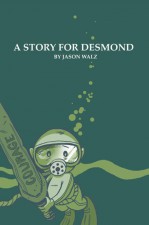 Homesick by Jason Walz also falls firmly in this category. The book has two intertwined threads: the fictional narrative of a stranded cosmonaut sinking deeper into the void, and a virtual memoir of Jason’s panic in the face of his mother’s worsening cancer. The title earned relatively wide admiration, including a 2014 Eisner nomination for Best Graphic Album.
Homesick by Jason Walz also falls firmly in this category. The book has two intertwined threads: the fictional narrative of a stranded cosmonaut sinking deeper into the void, and a virtual memoir of Jason’s panic in the face of his mother’s worsening cancer. The title earned relatively wide admiration, including a 2014 Eisner nomination for Best Graphic Album.
A Story for Desmond, a new 32-page full-color comic from Tinto Press, serves as a “(sort of) epilogue” to Homesick. However, it’s hardly necessary to read both to appreciate its impact.
As in Homesick, Walz weaves together fantasy and fiction in Desmond. This time, the shift in genres is ingrained in the plot. Initially, the frazzled father attempts to calm his crying newborn with toys and trinkets. When the baby becomes entranced by a picture of his late grandmother, the father begins to weave a series of stories to illuminate her many gifts. Walz brings these fables to life with the young Desmond cast as the hero.
At first glance, it’s a more straightforward device than the subtly woven strands of Homesick. But it also touches on the same themes that make the genre of “graphic medicine” so compelling: the role of creativity in healing and the use of narrative to find “meaning” in grief—whether you’re a bawling child or a parent facing the loss of one of the greatest sources of love and guidance in your life.
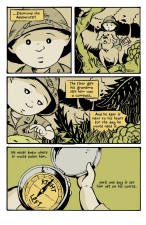 When your comic features a big-headed, balding young protagonist, it’s a fifty-fifty chance whether someone will mention Jimmy Corrigan or Peanuts first. Walz’s art hews closer to Schulz in its simplicity, foregoing an extensive level of visual detail in every instance but one: when necessary to accurately convey the emotions of his characters. The first page, featuring side-by-side panels of father and son in the calm before the storm, is just one of the simplest examples of how a few well-placed lines can ground us in the moment.
When your comic features a big-headed, balding young protagonist, it’s a fifty-fifty chance whether someone will mention Jimmy Corrigan or Peanuts first. Walz’s art hews closer to Schulz in its simplicity, foregoing an extensive level of visual detail in every instance but one: when necessary to accurately convey the emotions of his characters. The first page, featuring side-by-side panels of father and son in the calm before the storm, is just one of the simplest examples of how a few well-placed lines can ground us in the moment.
In Homesick, many sequences featured little to no words, letting the silence settle on the reader like a weight. Here Walz shows how the same tools can be used to convey a sense of wonder as Desmond explores an endlessly fascinating world. Ted Intorcio’s bright color palette also helps to add energy to Desmond’s far-flung travels.
Taking A Story for Desmond in tandem with Homesick, it’s refreshing to see an artist go beyond the usual approach to the monumental subjects of grief and loss. This brief tale is a reminder that life goes on in the wake of tragedy, and sometimes strength can be found in the most surprising places. Desmond‘s lightness and joy offers a way forward for those who may find themselves stumbling in the darkness.
Jason Walz (W/A), Ted Intorcio (C) • Tinto Press, $5





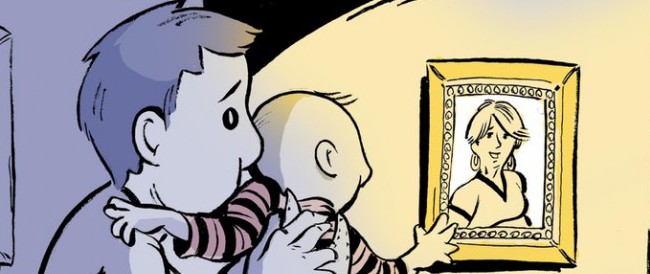
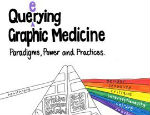


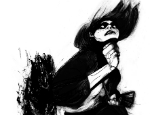
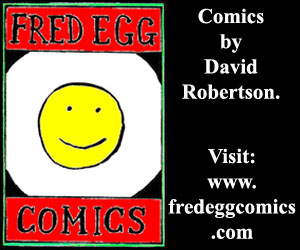

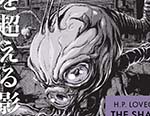


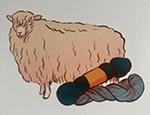
Thanks so much for the review!